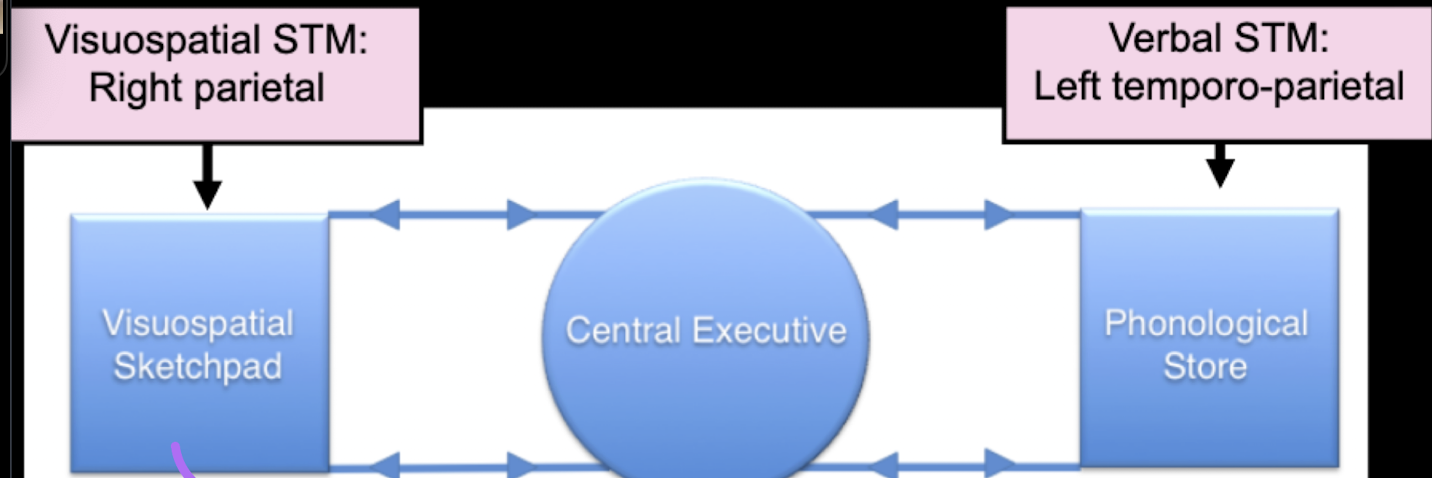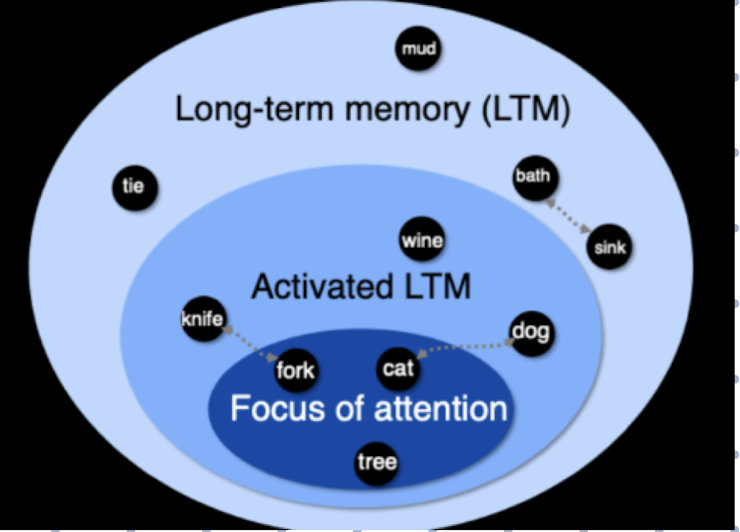short term / working
1/7
There's no tags or description
Looks like no tags are added yet.
Name | Mastery | Learn | Test | Matching | Spaced |
|---|
No study sessions yet.
8 Terms
short term memory
processes that maintain info for very short periods (<1 min)
material specific; capitalise on the systems we already have to remember things
loss does not effect long-term learning
verbal STM regions
left temporo-parietal region
prefrontal cortex
junction between ventral and dorsal streams
visuospatial STM regions
right parietal
prefrontal cortex
corsi blocks task
visuospatial sequence that doesn’t require or benefit from verbal information
alzheimers; grey matter loss in posterior areas and dorsal visual processing stream predict poor corsi block scores
more degeneration on the right side is more likely to have problems with visuospatial STM
rehearsal loop
when we rehearse material, we engage more prefrontal structures
baddeleys model of working memory
includes two ‘passive’ stores; one for verbal, one for VS
plus a control centre, the central executive
CE can manipulate stored information to solve problems

cowans model, WM
short term memory into a seperate set of systems
STM involves temporarily activating & maintaining knowledge elements from LTM
storage engages the same processes we use when were processing the information in real time
what we hold onto in short term memory is a way of activating or maintain activations in a set of long term representations
we can deliberately focus our attention on 3-4 elements that are active

prefrontal cortex & WM
prefrontal areas especially active during rehearsal
fMRI: prefrontal activated only during delay
when we rehearse verbal material, we engage left hemisphere frontal regions, anterior structures (repetition of words or letters with a delay)
when we rehearse VS material, we engage parietal and prefrontal, on the right (mental rotation + delay condition)